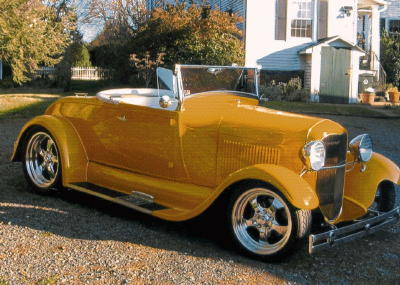|
Get
to know your VMMV staff & vehicles ......
In this section we introduce you to the people and armor of
the Virginia Museum of Military Vehicles. We will chat with
the VMMV staff, so that you can get to know the people who "keep
'em running" and work so hard behind the scenes. And also
provide a behind-the-scenes look into the history of individual
vehicles in the VMMV collection. In this, our fifteenth newsletter,
we have a special combination interview and vehicle feature:
Bob L. and his Fast Attack Vehicle.
Mr.
L, tell us about your background.
I graduated from the Armstrong Business College in Berkley,
California with a degree in International Business. While working
at Wells Fargo Bank, I went to San Francisco State at night
working on a Masters Degree. In 1966 I joined the Central Intelligence
Agency.
While
at the CIA I went to the Harvard Business School and earned
an MBA. I became involved in real estate and worked as a builder
in Silver Spring, MD. After working with a second builder, three
colleagues and I formed a partnership known as MagnaGroup. We
stayed together until 1989, primarily building residential units
in the greater Washington DC area.
My
wife and I purchased a farm in Culpeper, VA and when MagnaGroup
was dissolved, I went into business with another partner. I
retired in 2006 and still reside in Culpeper.
Wow,
you worked in the CIA? You are an international man of mystery.
After graduating from the Career Trainee program, I worked in
a variety of overseas assignments. I could tell you about them
but then I would have to kill you!
What
was it like to grow up in the Sixties in San Francisco?
I was a couple of years older than the younger generation, but
I found it fascinating to watch the social change this country
went through. It was a neat time to observe some very important
changes, no matter what your personal views were.
So
some VMMV fans right now are probably living in houses you built?
Yes, we built them to last!
Rumor
on the street is that you are a gear head?
I always liked cars, growing up in southern California I guess
it was just natural. So in 1985, after getting my business established,
I bought a 1926 Model T Coupe with a Chevy engine. We cruised
all around Washington DC….Man, were we cool!
From
there, I went to a vehicle our VMMV readers might be more familiar
with—I bought a Ferret in 1989. I then bought and sold
quite a few hot rods and vehicles…a T-bucket roadster which
a friend and I worked on for 4 years, another Ferret, a Shortland
armored car, a 1929 Model T Ford roadster (which I still have.)
Oh yes, and a 1986 Porsche and a Pinzgauer and a Fast Attack
Vehicle (FAV).
Tell
us more about the FAV, that sounds like a very unique vehicle.
It is. The FAV dates back to the light infantry division concept
of the early 1980s where it would be used for reconnaissance,
scouting etc and would be easier to get to Germany as a reinforcement
since it was light and small.
Initially,
400 FAVs were to be built by Emerson Electric, but the budget
was limited so only 125 were made. After the US Army bought
them for $80,000 per FAV (sans guns or radios.) By 1985, the
light infantry division concept was disproven, however, and
all but 10 of the FAVs were scrapped and the 10 remaining were
eventually sold to civilians. The vehicle that you see was one
of the final 10 and was acquired from Ropky’s museum.
What
is your favorite tank at VMMV?
The Fox armored car. I think it is a neat little AFV, totally
impractical but cool. Followed by the Scorpion with its Jaguar
engine. So I like the little “hot rod” tanks.
What
is your favorite weapon of all time?
The mini-gun. Anything that can fire 6000 rounds per minute
has awesome firepower.
Does
fruit belong on pizza?
NO! They should all be banned from pizza. Pizza should have
cheese and mass quantities of meat like bacon, sausage or pepperoni.
Ketchup
or mustard?
Mustard!
|























